A muscular Lab is broad, with wide shoulders and a blocky head. They won’t have obvious fat placement over their ribs or back, but will instead have solid, heavy set thighs. Most muscular Lab dogs will be fit and healthy, but it’s important not to over exercise your pup. Especially when they are young. In this guide to muscular Labrador Retrievers, we take a look at the physique of working and show line Labs, and whether visible, rippling muscles are ever part of that.
- How big do Labs get?
- Are Labradors naturally muscular?
- How to make your Labrador muscular
- Maintaining a health body shape
- Muscle problems in Labs
- Why is my Lab puppy so skinny?
A muscular Labrador Retriever’s physique isn’t always obvious under their dense coat. Nonetheless, Labradors exude strength and athleticism. Keeping your Labrador in healthy shape means more than making sure they’re bulging with muscle though, as we shall see!
Working Labs like Dual’s Hope Lewis in this video are kept in shape by practising frequent retrieves. They aren’t bulky, but some of their muscles are clearly visible under their coat. Let’s take a closer look at the ideal Labrador build.
How big do Labs get?
Show quality Labradors are 21.5 to 24.5 inches tall. Females shouldn’t be taller than 23.5 inches, and males shouldn’t be shorter than 22.5 inches. In ideal show condition, this means the average weight for Labs is 55 to 70 pounds for girls, and 65 to 80 pounds for boys. Working Labs and pet Labs might fall outside these ranges, but the same general rule holds true: they are substantial dogs for their height! So how much of that weight is muscle?
Are Labradors naturally muscular?
Yes! The main reason why Labradors can weigh so much relative to their height is because they tend to carry a fair bit of muscle. Muscle weighs 70lbs per cubic foot, making it one of the densest tissues in the mammalian body. Lab’s strength and athleticism is central to their physical ideal. Just take a look at all the times their musculature is alluded to in their breed standard:
- ‘The Labrador Retriever is strongly built… possessing a sound, athletic, well-balanced conformation.’
- ‘Light, weedy individuals are definitely incorrect; equally objectionable are cloddy lumbering specimens. Labrador Retrievers shall be shown… well-muscled and without excess fat.’
- ‘Loins should be short, wide and strong; extending to well developed, powerful hindquarters.’
- ‘Forequarters should be muscular, well coordinated and balanced with the hindquarters.’
- ‘Feet are strong and compact’
- ‘The hocks should do their full share of the work, flexing well, giving the appearance of power and strength.’
Being capable of great strength and endurance was vital for Labradors in their original working role. They were bred to retrieve waterfowl that had been shot by their handler, and bring it back in perfect condition. To be successful, they needed to be able to navigate difficult, uneven terrain, and even swim to their target if necessary. And they needed the physical stamina to do it over, and over, and over again.
How to make your Labrador muscular
Would you like your Lab to exude the rugged strength of a strong dog? Like most things, this ideal is fantastic… in moderation. Labradors are working dogs with lots of physical energy, and they naturally put on an impressive amount of muscle if they lead an active lifestyle. Providing lots of opportunities for physical activity is an important part of keeping them in healthy condition. Obesity is one of the most common health problems affecting Labrador Retrievers, and lack of exercise is a contributing factor. However, over exercising your Lab, or exercising them in an unsafe way to achieve a more muscular fram,e can result in injuries.
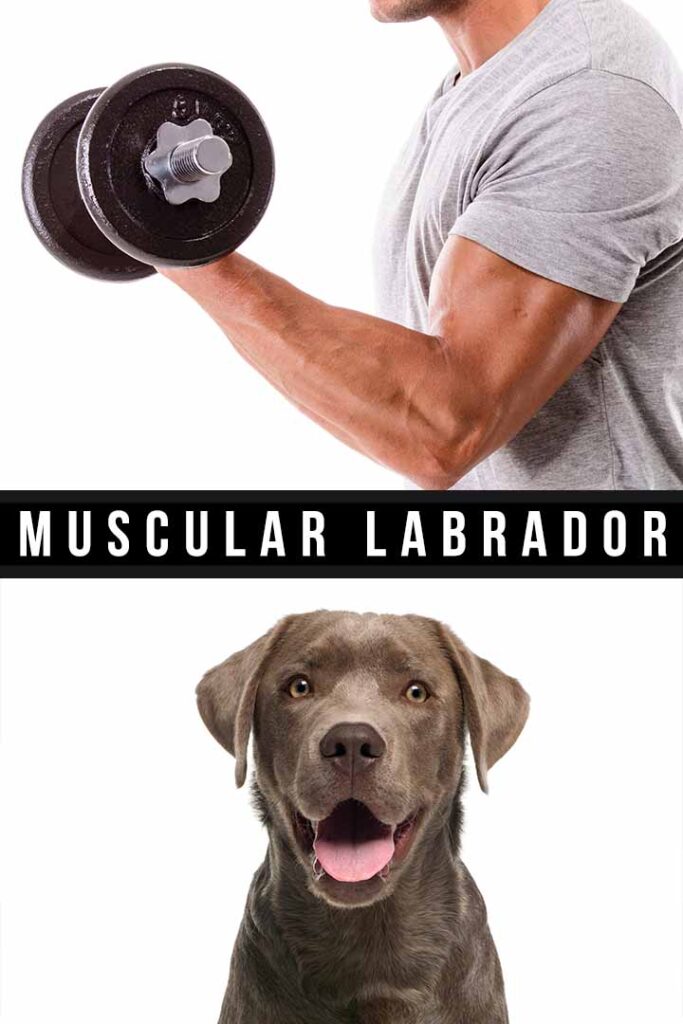
Since Labs have naturally well-defined muscles, you only need to find one or two activities you enjoy doing together, and combine them with regular walks or games in the yard, in order to maintain optimum musculature. Activities you might like to try include:
Maintaining a health body shape
Rather than getting preoccupied with how muscly your Lab is though, it’s more important to get familiar with how they look in healthy condition, and do your best to maintain that. This is particularly significant for Labrador owners because not all Labs look the same in optimum condition. Broadly speaking there are two types of Labrador: English type, also known as show or bench type, and American type, also known as working or field type. Despite their names, which type they belong two doesn’t necessarily describe where a dog comes from – both types are popular on either side of the Atlantic!
English Labradors tend to be shorter and stockier than American Labradors. Their coat also tends to be a fraction longer and more plush. This can have the effect of making them look more heavy set and powerful, but also of making specific muscle groups less perceptible. American Labs tend to be taller and more athletic looking. Their coat is sometimes thinner, which means it’s easier to make out the individual muscles under their skin. So both types look strong, but in slightly different ways.
So, it’s important to learn what kind of physique is right for your dog in prime condition. Your breeder can help, by showing you photos of their parents and grandparent. Your vet can also help, by assessing their body condition at their annual check ups, and showing you what to look for. Healthy diet and regular exercise are both important for maintaining a healthy body condition.
Muscle problems in Labs
Sometimes all that muscle isn’t all good news for Labradors. Some breeding lines are affected by inherited canine muscular dystrophy. Muscular dystrophy in dogs causes progressive muscle weakness in affected dogs. To protect future generations of puppies, affected dogs and siblings of affected dogs should be excluded from breeding programs. Another group of muscle diseases which we often don’t think of as such are the cardiomyopathies – diseases which damage the muscular walls of the heart. To protect puppies against these, the Orthopedic Foundation for Animals recommends that breeding dogs receive a full cardiac evaluation.
Acquired muscle injuries
Acquired muscle injuries are things like sprains and strains. Despite how active they are, these aren’t a common problem for Labs, although they do occur. In a survey of working gundogs over two seasons, only 8 out of 325 Labs sustained muscle injuries, compared to 38 dogs which sustained wounds or tail injuries, and 28 who injured the pads, nails or webbing on their feet. If your Lab appears to be experiencing any form of muscle pain, it’s a good idea to ask a vet to check them over.
Why is my Lab puppy so skinny?
Finally, a common question our readers ask is ‘why is my Lab puppy so skinny, and not muscular like the other Labs we see?’ The answer to this is usually that the other dogs they see are physically mature! Immature Labrador puppies do not have the same muscle tone as fully grown dogs. Between 6 and 18 months old it’s not unusual for them to go through a lanky ‘teenage’ phase too. After they reach their full adult height (around 15 to 18 months old) they typically fill out with some more muscle, and start to look more like the archetypal Labrador Retriever. It’s important not to overwork a young dog to try and make them more muscly, as this can cause permanent damage to their joints. If you’re ever worried that your puppy is failing to thrive, or meet anticipated growth milestones, always ask a vet to rule out underlying medical causes.
Muscular Labrador Retriever summary
Labradors are a naturally well-muscled dog breed, but their dense coat sometimes makes their muscles hard to see. Exercise and dog sports are good ways to keep your Lab in prime physical condition. But don’t drive them to achieve a physique which is at odds with their overall health.
We’d love to hear how you keep your Lab in optimum condition in the comments box down below!
References
Bell & Cavanagh. Veterinary Medical Guide to Dog and Cat Breeds. CRC Press. 2012.
Houlton. A survey of gundog lameness and injuries in Great Britain in the shooting seasons 2005/2006 and 2006/2007. Veterinary and Comparative Orthopedics and Traumatology. 2008.
Kluess et al. Perceptions of Body Condition, Diet and Exercise by Sports Dog Owners and Pet Dog Owners. Animals. 2021.
McGreevy et al. Labrador retrievers under primary veterinary care in the UK: demography, mortality and disorders. Canine Medicine and Genetics. 2018.
Official Standard for the Labrador Retriever. American Kennel Club. 1994.
The Labrador Site Founder
Pippa Mattinson is the best selling author of The Happy Puppy Handbook, the Labrador Handbook, Choosing The Perfect Puppy, and Total Recall.
She is also the founder of the Gundog Trust and the Dogsnet Online Training Program
Pippa's online training courses were launched in 2019 and you can find the latest course dates on the Dogsnet website

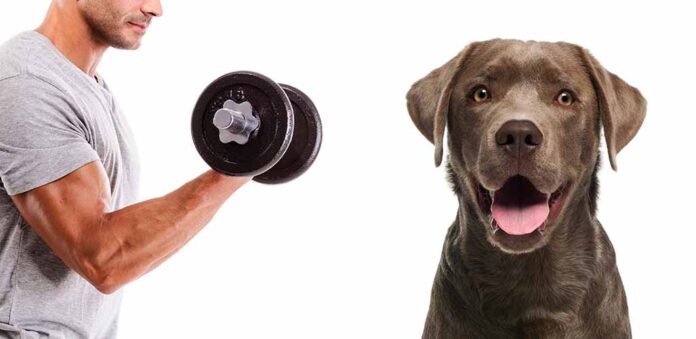



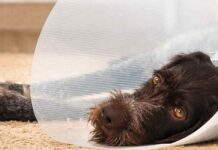

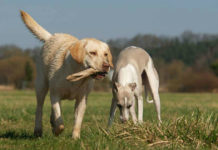
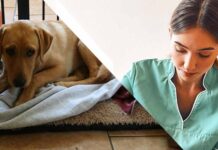
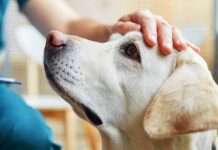
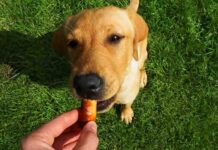








I recently started walking my neighbors 2 yo chocolate lab after losing my 13 yo boxer/pit last Oct. Boy this dog is STRONG!! After walks we play ball in my yard. I was holding leash he saw ball and I went to the ground. Black eye and arm scraped. How do I control him? He doesn’t know how to go on walks because they NEVER walk him. Don’t want to stop but how do I teach him not to pull?